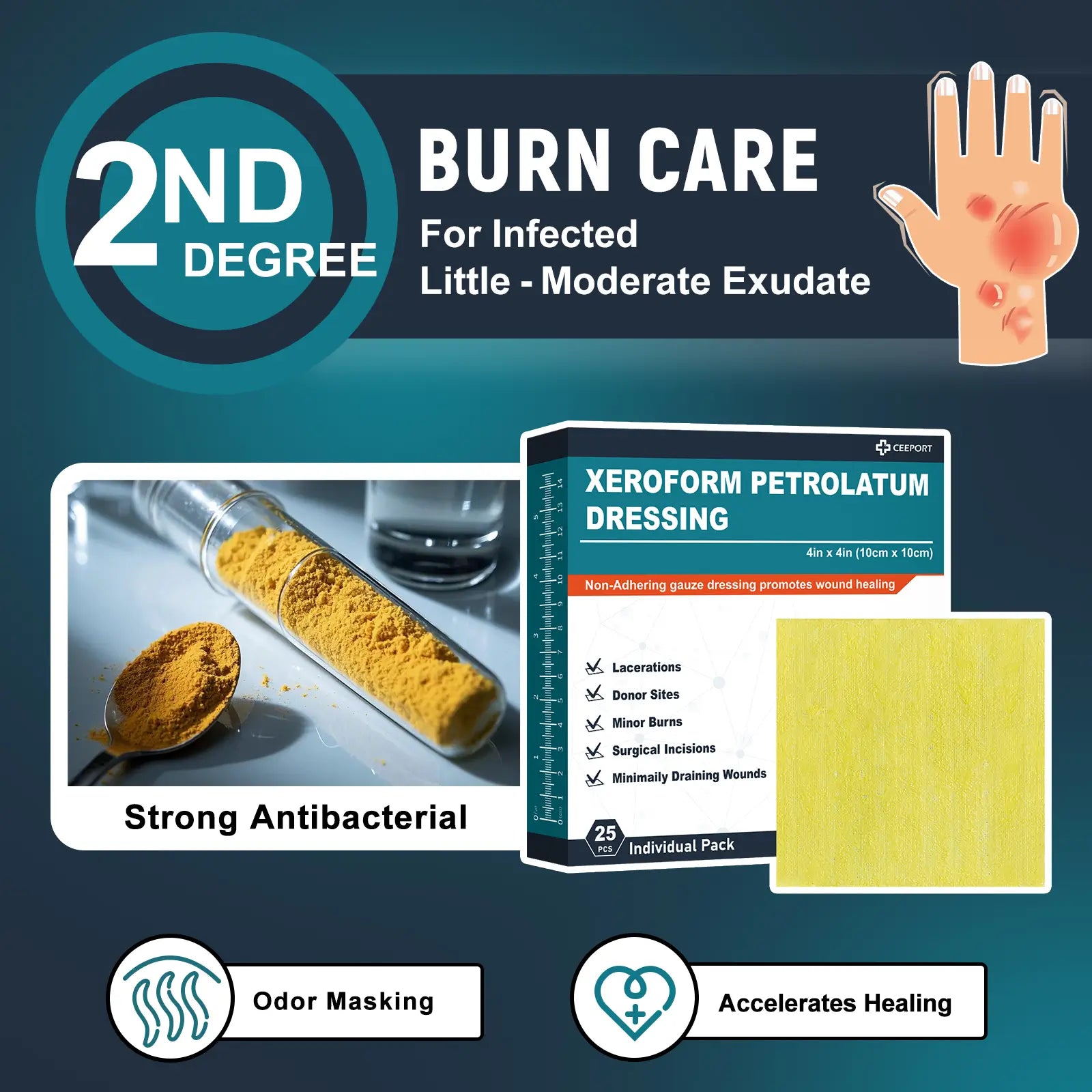
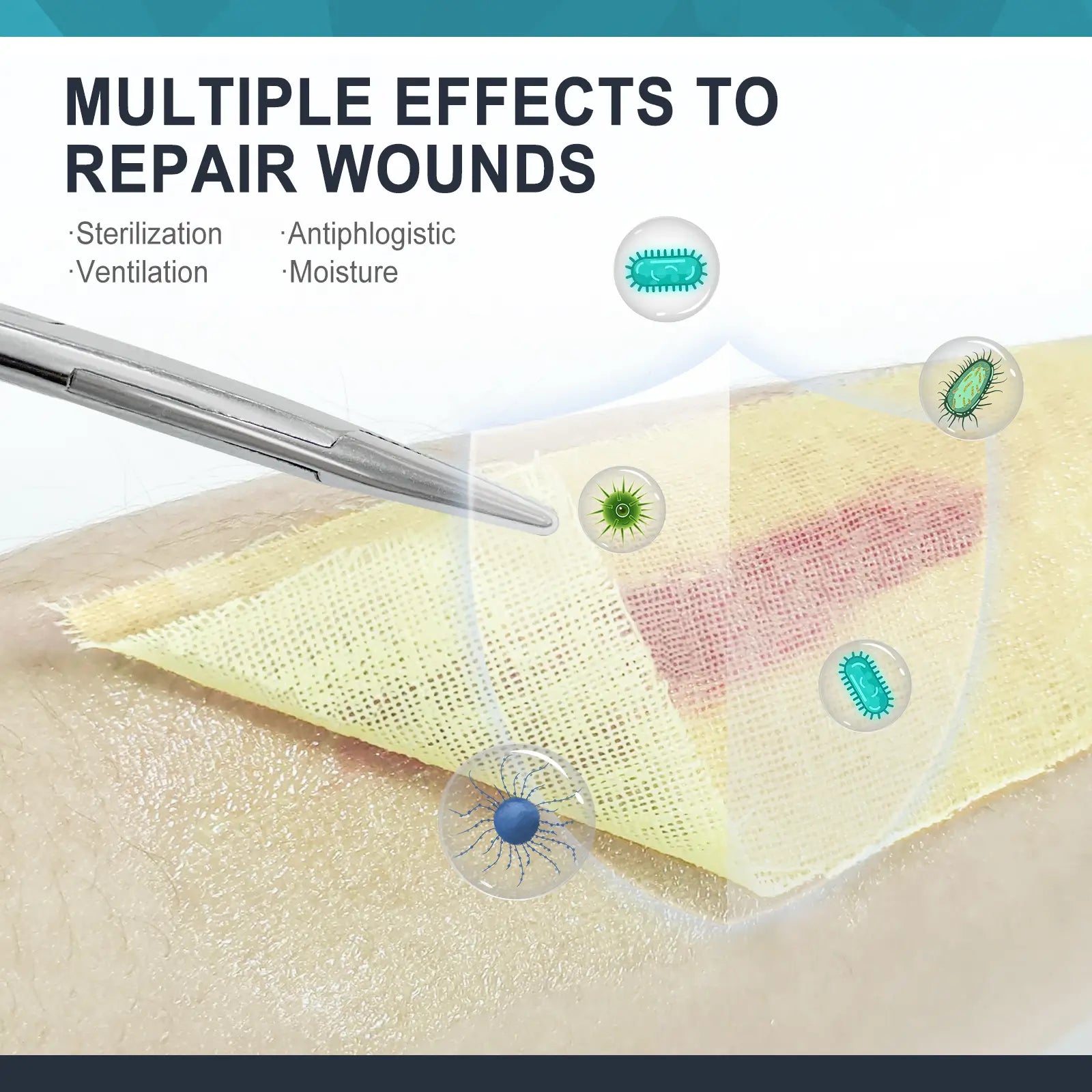
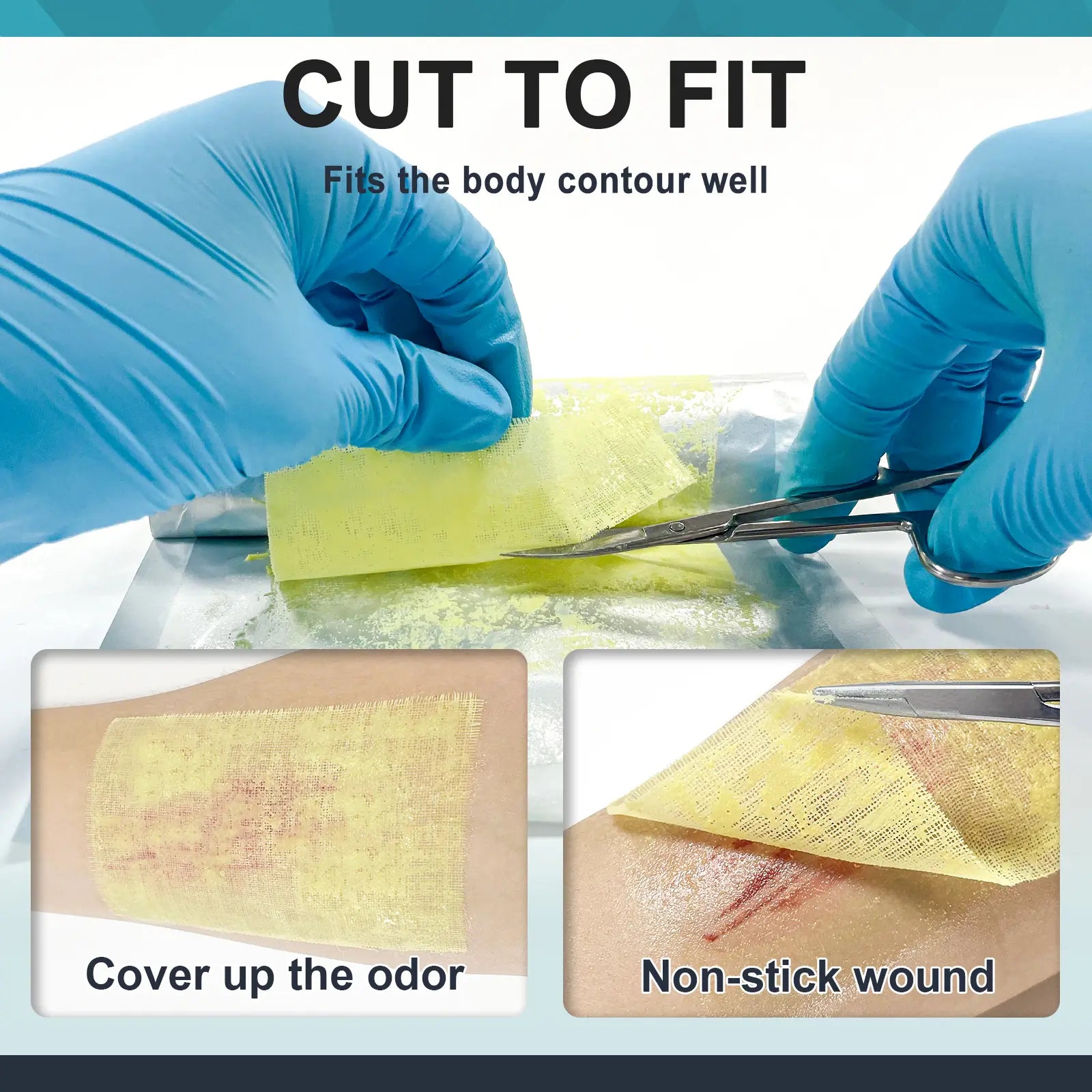
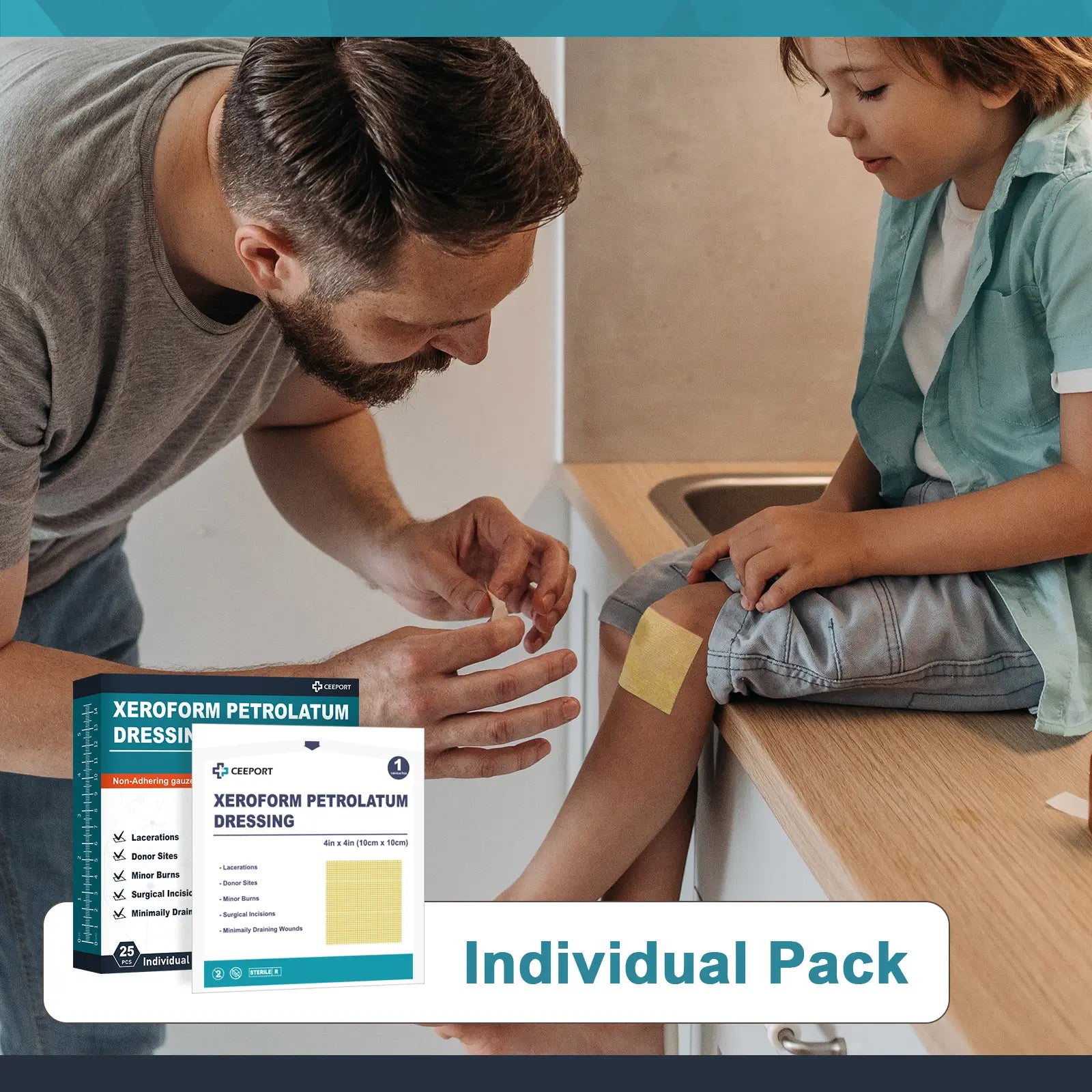
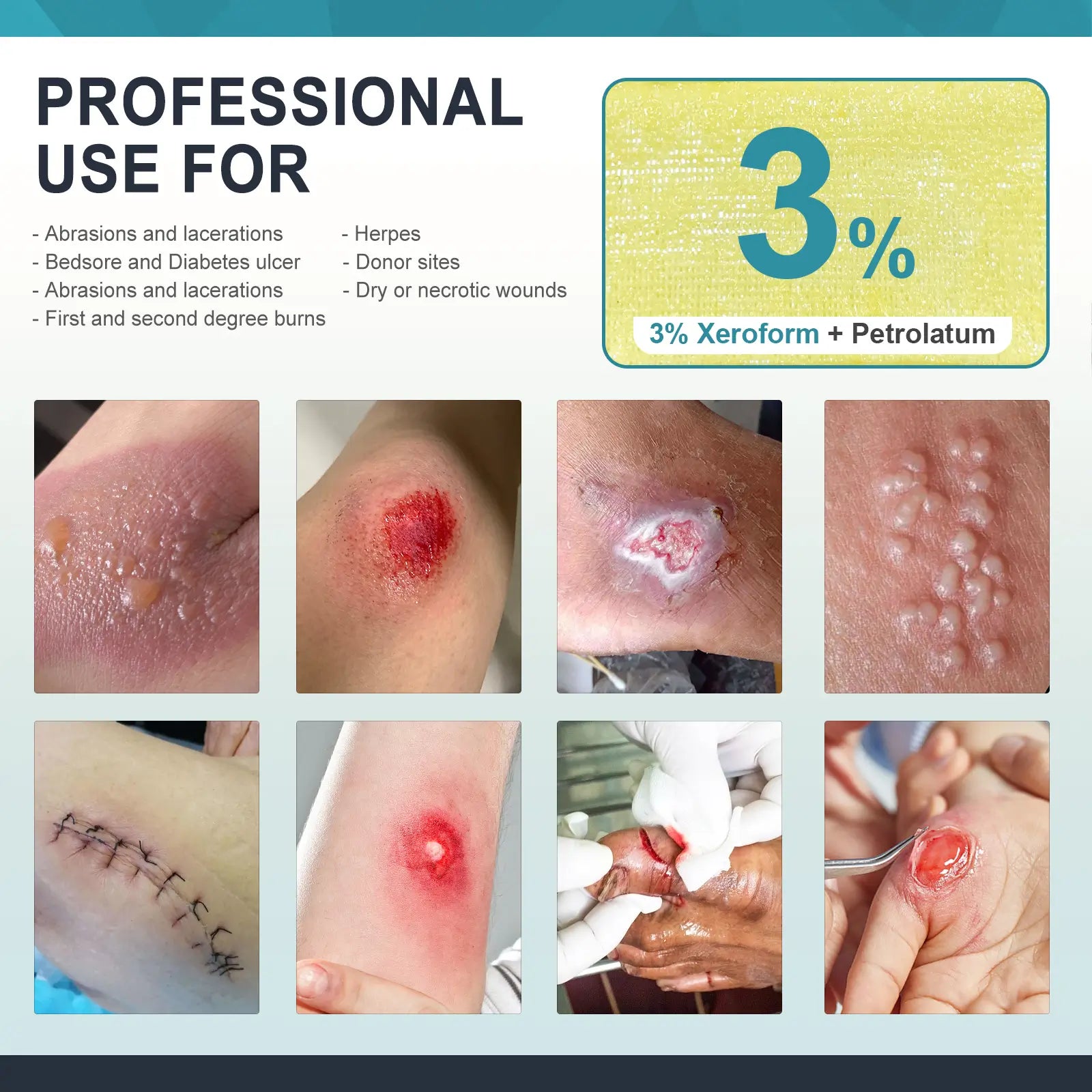
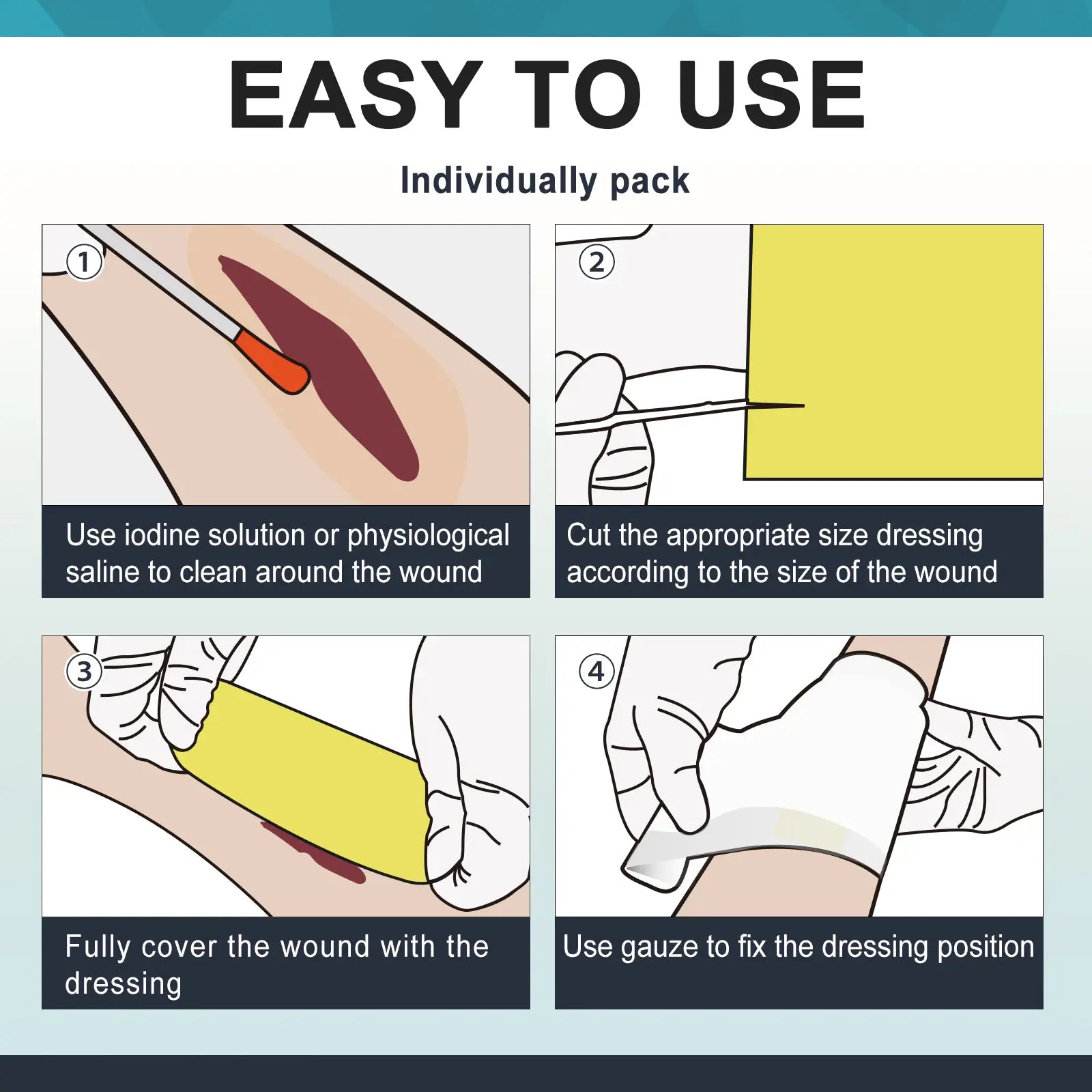

Xeroform Wound Dressing: Non‑Adherent Petrolatum Gauze for Moist Healing
Indications
Tribromophenol bismuth dressings are suitable for various types of wounds that require infection control, debridement, and promotion of healing, especially for wounds with excessive exudate, noticeable inflammation, or strong infection risk.
Such as minimally draining wounds, surgical incisions, lacerations, ulcers, donor sites, 1st & 2nd burns etc.
Pairs well with

Xeroform Wound Dressing: Non‑Adherent Petrolatum Gauze for Moist Healing
DETAILS
Material
- Finely woven mesh medical gauze
- Petrolatum
- 3% bismuth tribromophenate
Main Mechanism
Antibacterial Action: Tribromophenol bismuth has strong antibacterial properties that inhibit the growth of bacteria in the wound. It is particularly effective against anaerobic bacteria and is commonly used for infected wounds to control infection and promote wound cleanliness.
Anti-inflammatory Action: Tribromophenol bismuth has anti-inflammatory effects that help reduce inflammation around the wound, alleviating swelling, redness, and pain, thereby promoting comfort during the healing process.
Promoting Wound Healing: By clearing pathogens and reducing inflammation, tribromophenol bismuth dressings help the wound heal more quickly in a moist environment. A moist environment accelerates the growth of new tissue and promotes cell regeneration.
Debridement: Tribromophenol bismuth helps remove necrotic tissue or debris from the wound, preventing the wound from becoming necrotic or accumulating pus. This helps keep the wound clean and reduces the risk of infection.
Protective Action: The physical properties of the dressing (such as the base material) help protect the wound from external mechanical irritation or contamination, while also reducing the exposure of the wound to the external environment, lowering the risk of further infection.
Instructions
- Clean the wound with saline;
- Dry skin around the wound;
- Select the appropriate size, tear the package(or tear the bottom of the real). Remove the protective papper with gloves and tweezers. Cover the wound surface directly with single-dressing;
- If need, use the second dressing, fix the dressing bandage;
- Change the second dressing for absorption. Not need to change paraffin gauze. The frequency of change is depend on the wound, ranging from once a day to twice a week;
- Remove the dressing with saline if the dressing is sticked to the wound.
Contraindications
It can not be used for more than 10% of body surface area of the wound. Dermatitis, contact allergy or photoallergy somtimes occur but rarely, need the second dressing.
Do not use if the package is damaged or opened.
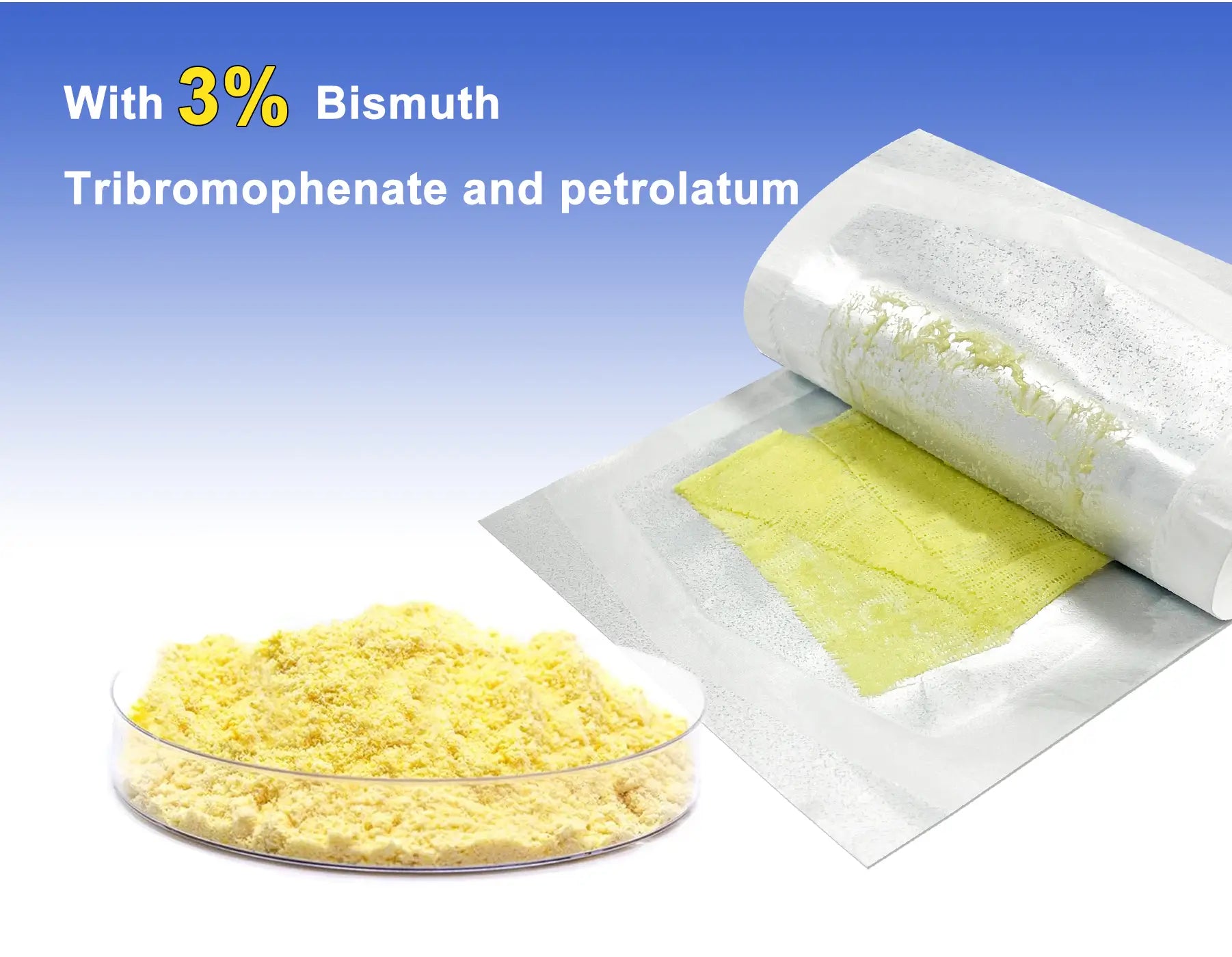
Xeroform Wound Dressing: Non‑Adherent Petrolatum Gauze for Moist Healing
Our Xeroform Wound Dressing is a petrolatum‑impregnated, non‑adherent gauze designed to promote a moist healing environment while gently protecting delicate tissue. Ideal for superficial wounds, donor sites, and skin grafts, this dressing minimizes trauma on removal and helps maintain optimal moisture balance to support epithelialization and reduce scarring.

Key Features & Benefits
Non‑Adherent Comfort
The petrolatum‑coated mesh won’t stick to the wound bed, ensuring painless dressing changes and preserving newly formed tissue.
Moisture Retention
Maintains a moist microenvironment that accelerates cell migration and epithelial growth without macerating surrounding skin.
Gentle Protection
Provides a soft, breathable barrier against contaminants and friction, lowering infection risk in minor acute and chronic wounds.
Versatile Use
Suitable as a primary dressing for superficial abrasions, donor sites, skin grafts, and burn wounds.

Application & Wound Care Process
Preparation: Cleanse the wound area with sterile saline and gently pat the periwound skin dry.
Dressing Selection: Choose a piece of Xeroform Wound Dressing large enough to extend 1 cm beyond the wound margins.
Application: Place the petrolatum‑side down directly onto the wound bed, ensuring full contact without tension.
Securement & Change: Cover with a secondary gauze or light gauze wrap. Inspect daily; replace every 1–3 days or if the dressing becomes saturated. Dispose of used dressings per biomedical waste protocols.
Easy to Use

Cleaning
Clean the assess the wound as appropriate to ensure that the skin around the wound is dry.

Cut
According to the size of the wound, cut it to the appropriate size.
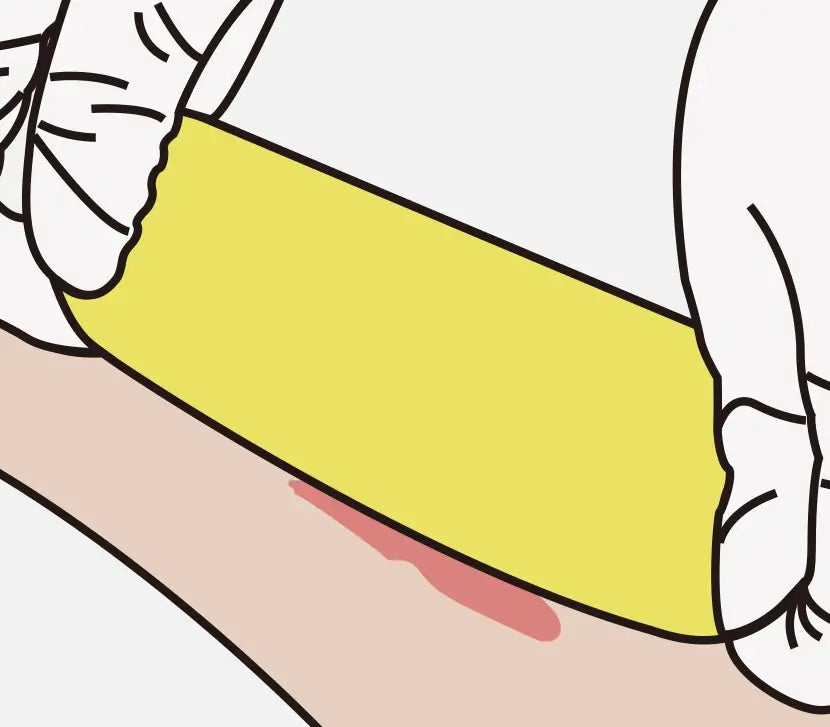
Apply
Apply the wound dressing to overlap the wound edges at least 1 cm.

Fixed
Fixed it with a bandage or dressing.
You asked, we answered.
What types of wounds is Xeroform Petrolatum Dressing used for?
- Minor burns (first- and second-degree)
- Donor sites
- Skin grafts
- Surgical incisions
- Abrasions
- Pressure ulcers and other shallow wounds
- Skin tears
Is bismuth tribromophenate gauze antibacterial?
Yes. The 3% Bismuth Tribromophenate in the dressing offers mild antibacterial properties to help reduce the risk of infection and odor.
How often should I change the Xeroform dressing?
Generally, Xeroform dressings can remain in place for 1 to 3 days, depending on wound condition and drainage. Change the dressing when it becomes saturated, discolored, or no longer adheres well.
Does it stick to the wound?
No. Xeroform is designed to be non-adherent, meaning it won’t stick to the wound bed, making dressing changes less painful and reducing trauma to healing tissue.
Do I need a secondary dressing?
Yes. Xeroform should be covered with a secondary absorbent dressing (like gauze or foam) to manage exudate and keep it in place.
Does Xeroform have any odor?
Yes, a mild medicinal odor is normal due to the bismuth content. This is not harmful and is often considered a sign of the product’s antibacterial properties.
Is Xeroform safe for sensitive skin?
Most users tolerate it well, but if you have a known sensitivity to petrolatum or bismuth compounds, consult your doctor before use.




